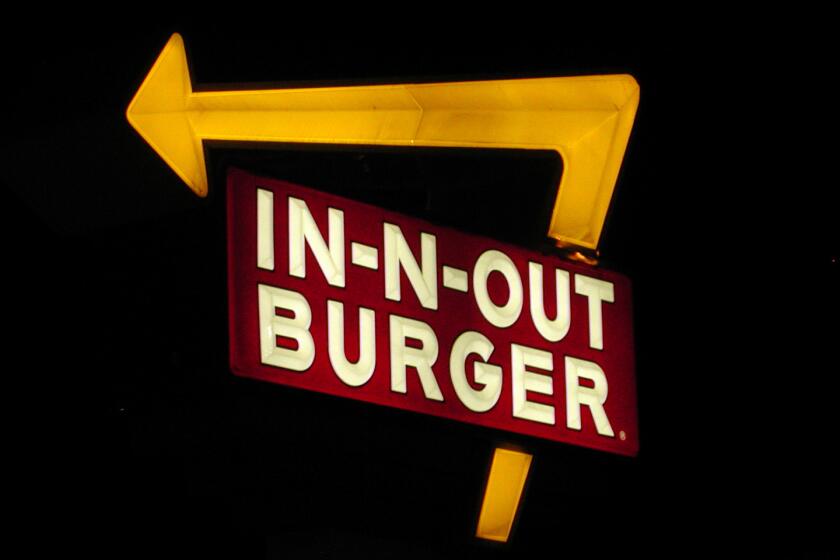Foreign Firms Creating Thousands of Jobs in U.S.
- Share via
Although it’s been widely reported that American workers are losing jobs to cheaper overseas labor, a little-known and often overlooked fact is that foreign companies are creating thousands of U.S. jobs, particularly in California.
Take, for example:
Kawasaki Steel of Japan and Rio Doce Ltd. of Brazil, in a partnership with California industrialist Michael Wilkinson, have invested millions of dollars in the old Kaiser Steel facility in Fontana, which was closed in December, 1983. The plant resumed operations last November under the new name of California Steel Industries Inc. and employs more than 700 workers--75% to 80% of whom once worked for Kaiser. Employment at the plant might reach 1,200 within the next two years, a spokesman says.
Mitsubishi Corp. and Chuo Kagaku Co. will invest $14 million in a new plant in San Bernardino to produce plastic containers for the fast-food industry. The new C&M; Fine Pack Co.’s 130,000-square-foot facility is scheduled to be completed in October, 1986, and will employ as many as 250 when the plant is operating at full capacity.
Toshiba America employs a total of 450 workers at two distribution facilities in Tustin. It is looking at additional land in the area to expand its operations, which would result in still more jobs.
Japanese companies have become the most aggressive among the growing number of foreign investors who find the state attractive for investment.
Such foreign investment, which totaled $25 billion in California in 1982 (excluding banks), has ranged from a Spanish-owned plant in Sacramento that produces flan, a custard dessert, to expensive downtown Los Angeles real estate. And that investment has typically resulted in new employment opportunities.
In 1982, the latest year for which data is available, 252,000 people in California worked for a foreign company. That was up from 248,000 the year before, according to the Conference Board, a New York research organization that compiles information on foreign investments in the United States.
Last year, California was second only to New York among the states in attracting foreign investment in manufacturing. David Bauer, an economist at the Conference Board, says virtually all of the increase in 1984 came from the Japanese.
“Most of the (foreign) investment is in property, plant and equipment, which results in permanent jobs,” explained Jim Vaughn, director of business development for the California Department of Commerce. “Most of the foreign investment that we see coming into California is in what we call ‘productive facilities.’ They are building plants, distribution and assembling centers for products to be marketed in the United States.”
One of the most heavily publicized--and largest--of the recent foreign investments in California is the joint venture between General Motors and Toyota Motor Co. to build small cars at Fremont in a plant that GM closed in 1982.
The venture, known as New United Motor Manufacturing Inc., employs 1,800 workers, the vast majority of whom were previously employed at the plant by GM. Employment is expected to rise to 2,500 when a second shift is added in 1986.
Bauer at the Conference Board notes that when a Japanese auto maker builds a plant in the United States, it usually attracts other foreign investment and thus creates even more jobs. When Honda located a plant in Ohio and Nissan opened one in Tennessee, the projects subsequently attracted a number of other Japanese companies that produce components for the autos, he says.
“If history repeats itself, (New United Motor) is likely to attract a number of smaller companies that produce components,” Bauer says.
Southern California, however, appears to be far more attractive to foreign investors than Northern California. Vaughn says about 60% to 70% of foreign investment that flows into the state goes into Southern California. “The Southern California area has a very good reputation as a very good growth-oriented marketplace. Los Angeles is getting a worldwide reputation as a truly international, world-class city.”
Although Japanese investments have the highest visibility, they actually lagged behind European investments in California both in dollar value and in the number of jobs created as of 1982.
Japanese investment in California tends to be concentrated in building facilities from scratch, Vaughn says, while “a lot of Canadian money goes into real estate development. We see it in office buildings and industrial products. . . . The British and Germans are more inclined to acquire existing companies and expand their operations.”
Of California’s $25 billion in foreign investment, which included manufacturing, real estate and wholesale and retail trade, Japan accounted for $2.2 billion, while Britain, West Germany, the Netherlands, France and Switzerland collectively invested a total of $14 billion, Canada $5.6 billion, Latin America $1.2 billion and Australia, New Zealand and South Africa a total of $170 million.
European firms also accounted for 145,000 of the 252,000 jobs generated by foreign companies in California in 1982. Canadian firms employed 27,000, while the Japanese provided 43,000 jobs.
“A significant percentage of the new jobs are in production-related jobs,” Vaughn says, but he notes that employment at foreign-owned companies mirrors the composition of the overall U.S. workplace and includes manufacturing, service, clerical and executive positions.
“The foreign investors seem to pay competitive wages in the marketplace. Wages are comparable to what American companies are paying,” Vaughn says. “There are a few exceptions (where pay is lower), but oftentimes that doesn’t last for long because it backfires. They have to compete for workers with American companies.”
Don Pedersen, a mill scheduler at the California Steel plant in Fontana, says he is earning a “little more” than he had previously when he worked for Kaiser. He says, however, that entry-level wages at California Steel are lower than under the old management, while pay for certain jobs at higher levels is the same if not greater than before.
Companies operating under foreign management often introduce employment concepts borrowed from overseas. At California Steel, for example, there are no time clocks. “All of our employees are paid an annual salary,” says Teenie Buck, California Steel’s personnel manager. In addition, the company supplies and maintains uniforms for all employees.
The GM-Toyota plant at Fremont is considered a test project for how well Japanese management and production techniques can work in an American workplace. Workers are organized into teams and groups, and there are no special perks for executives: There is only one dining room so that executives and factory workers eat side by side. “The emphasis is on mutual trust and a common goal,” says one employee.
More to Read
Inside the business of entertainment
The Wide Shot brings you news, analysis and insights on everything from streaming wars to production — and what it all means for the future.
You may occasionally receive promotional content from the Los Angeles Times.










